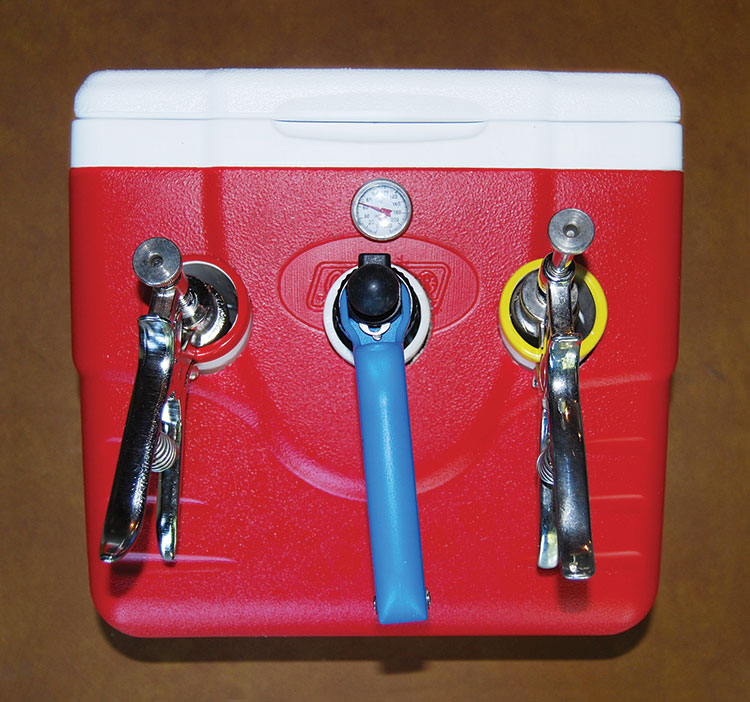

A syringe cooler keeps a vaccine at the right temperature, protects the vaccine from UV radiation, and keeps syringes safe. Commercial coolers are available, but veterinarians Grant Dewell and Troy Brick from Iowa State University shared directions for making a homemade syringe cooler with just a few basic supplies.
- A small, rigid cooler large enough to hold the necessary number of syringes
- A 1.5-inch interior diameter PVC pipe
- A hole saw (The exterior diameter of a schedule 40 PVC pipe is 1.9 inches, so a 2-inch hole saw will be needed.)
- Drill and drill bit
2. Measure and mark placement of the holes. Leave at least 1-inch of space between the interior side wall and the PVC pipe to allow for air circulation. Drill at a downward angle toward the inside of the cooler, so the slope of the pipe prevents the syringes from falling out and assures any leakage drains out of the pipe.
3. To allow easy access, space holes evenly across the front of the cooler.
4. To facilitate a continuous proper temperature between 35 and 45°F, holes should be drilled through the pipe to allow air circulation. Without holes, the pipes will maintain dead air space that does not cool well. Colored tape can be used to mark each tube, and syringes can be labeled to match.
5. Drill a small hole in the upper part of the cooler to insert a probe thermometer to measure the air temperature inside the cooler.
6. The PVC pipe can be stabilized with a large head screw on the back wall that the pipe can rest on and then be secured with polyurethane glue. Once secured, use silicone caulk to seal around the hole where the pipe passes through the cooler wall.
When using the cooler, it is important that the syringes are maintained at the proper temperature. It can take more than an hour for the temperature to drop from room temperature to 45°F if just one ice pack is placed in the cooler.
The best way to make sure a cooler is ready to use is to slide one or two thawed ice packs under the PVC pipe, place the unit in the freezer, and let the ice packs freeze. When ready to use, place another ice pack on top of the PVC to ensure the syringes stay cold. If using ice, make sure the water level from the melting ice does not reach the bottom of the PVC pipe and contaminate the needle tips.
The cooler can also be used in winter to keep vaccines from freezing. Place sealable plastic bags of hot water inside the cooler.








